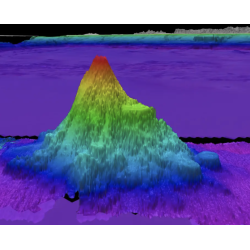- Student test on undersea mountains
- Teacher notes and answers for this test
- Buy using PayID 47065111373 OR
- Your files will be emailed to you
- Download the App by pointing your camera at the QR code

Parent and Teacher Notes
This experiment explains how mid-ocean ridges form on the divergent boundaries of tectonic plates. When tectonic plates on the earth’s surface move apart, a gap is created. Magma, which is molten rock, rises through the gap. When it reaches the surface, we call it lava. This lava then cools down into solid rock. Layers and layers of this rock form undersea mountain ranges, or volcanic islands.
Scientific concepts covered:
Tectonic Plates: The outermost layer of our planet Earth is called the Earth’s crust – it’s what we are standing on, and holds up the ocean, too. The crust is broken into puzzle pieces called tectonic plates.
Divergent Boundary: A divergent boundary is where two tectonic plates drift apart. This forms a gap in the Earth’s crust. Magma rises through this gap, since it is less dense, and becomes lava when it exits the crust. It cools down to form solid rock. This happens multiple times, like a slow volcanic eruption. The layers build up and can form volcanic islands or mountain ranges under the ocean.
Mantle: The mantle is the largest layer in our planet Earth. The outermost part of it is made of very hot rock, including molten rock (magma).
Convection Currents: These currents are movement inside the Earth’s mantle due to the heat within. They cause the earth’s crust and tectonic plates to move very slowly over time, making plates push together or drift apart.
Production Notes
Image displayed for illustrative purposes only. if you are the copyright owner, please contact us.
AR20 - How do undersea mountains form?
- Brand: Kilbaha Education
- Product Code: How do undersea mountains form?
- Availability: In Stock
-
$10.00
Tags: Augmented Reality (AR)
